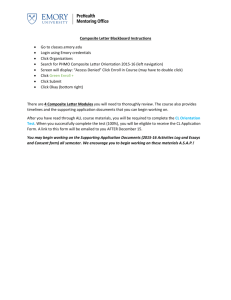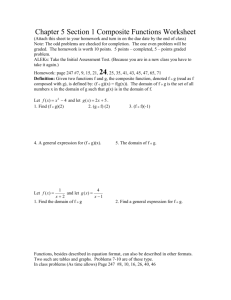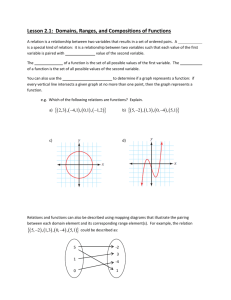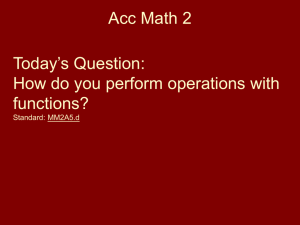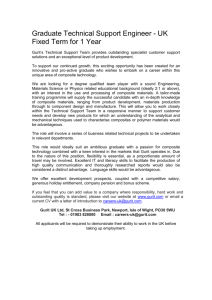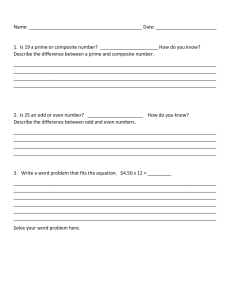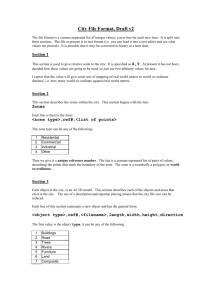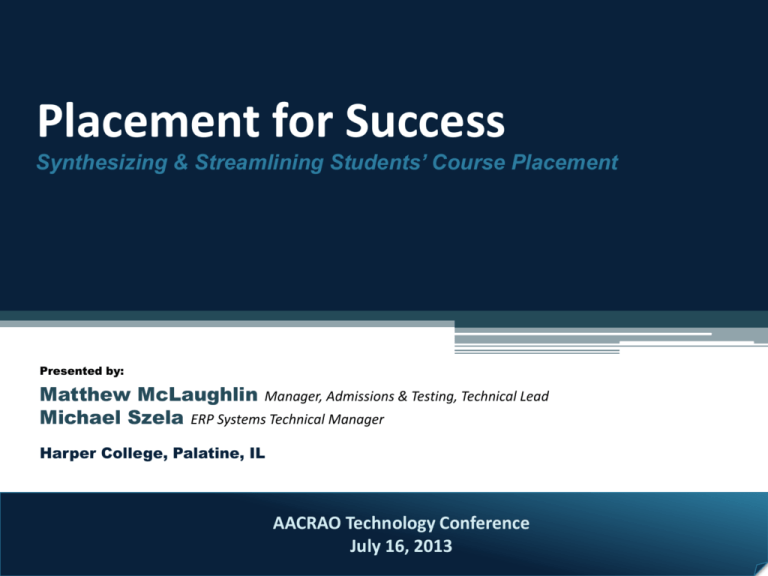
Placement for Success
Synthesizing & Streamlining Students’ Course Placement
Presented by:
Matthew McLaughlin Manager, Admissions & Testing, Technical Lead
Michael Szela ERP Systems Technical Manager
Harper College, Palatine, IL
AACRAO Technology Conference
July 16, 2013
Harper College
• Located in the northwest suburbs of Chicago
• Serves 535,000 residents
• 27,419 annual unduplicated headcount
• 39% over age 25
• 50% plan to transfer; 20% pursuing career
program; remainder upgrading
skills/personal enrichment
• Strategic Plan focused on Student Success
& Completion
• Member of Achieving the Dream Network
The Stakes Have Never Been Higher
• Only 24% of high school graduates - intending to go to college - meet all
four ACT benchmarks of College readiness.
• Less than 25% of students who enroll in community colleges will earn an
associates degree in less than three years.
• Adelman (2006) confirms that students who place into developmental
courses are less likely to complete college than those who are not
Sources:
*Time is the enemy. Complete College America – 2011
**Claiming the American Dream: Community Colleges and the Nation’s future - 2012
Agenda
• The Presenting Need
• Characteristics of the Solution
> Student Composite Report
> Placement Logic Enhancement
• The Tools and Technique Used
The Presenting Need
Increase in people needing placement, but systems in which to
facilitate the process and outcome of testing were not streamline or
efficient.
Placement for Success Initiative
Placement for Success
PROJECT
Admissions
Redesign
PROCESS
INPUTS
PROJECT
Web Based
Appt.
Making
PROJECT
STUDENT
COMPOSITE
REPORT
Students demonstrate
ENG/RDG/MTH
knowledge via
COMPASS, ACT or
course completion
RECEIVING
RESULTS
Students receive
results i.e. test scores,
course grades, etc.
Performance
FEEDBACK
Value
FEEDBACK
PROJECT
Mandate
Dev. Course
Enrollment
PROJECT
MTH/ENG
Course
Eligibility
The Problem
College
Placement
Policy
Not just about COMPASS….
HS
COMPASS
COMPASS
Waivers
Previous
College
Courses
HS
Final
Exam
Dual
Credit
Courses
ACT
Course Eligibility
Upper Level Courses = Easy Prerequisites
…..Not so much for ‘gatekeeper’ courses
ENG 101
MTH 101 +
Reading
Dev Math
Writing
Geometry
MTH 101+: Two Domains to Satisfy
GEOMETRY OPTIONS
HS
Geo.
MATH OPTIONS
Compass
Math
Compass ACT
Geo.
Math
ACT
Math
Expired
ACT Math
MTH
070
HS MTH
080 Final
MTH
080
Transfer
Course
Transfer
Course
GENERATOR
ENG 101: TwoELIGIBLITY
Domains
toBUTTON
Satisfy
READING OPTIONS
WRITING OPTIONS
ACT
Reading
COMPASS Counselor
Reading Waiver
RDG 099
ACT
Writing
COMPASS
Writing
ENG 100
ENG 101
ESL 074
Transfer
Course
Eligibility
Generator
ESL 073 Transfer
Course
Yes, you are eligible
OUTCOME
to take ENG 101.
Solution #1
Putting it all together
Student Composite Report
Student Composite Report
Student Composite Report
Solution #1 – Student Composite Report
Student Composite Report
Solution #1 – Student Composite Report
Student Composite Report
Solution #1 – Student Composite Report
Student Composite Report
Solution #1 – Student Composite Report
Student Composite Report
Student Composite Report
Wish List
Would like a Name Search
feature or automatic
population of ID from SIS
system.
Solution #2
Addition of Logic
Math & English Course Eligibility
Logic Enhancement
Project Strategies
• Provide students access to their repository of test
scores and previous ENG/MTH coursework
• Automatically synthesize all various data elements
that influence Math and English/Reading course
eligibility
• Provide special emphasis when students do not
place at a gatekeeper course
Logic Enhancement
Requirements
Real Time
Single Source of Data
Logic Enhancement
Logic Enhancement
Solution #2 – Placement Logic
Enhancement
Isolates the
domain(s) keeping
them from collegelevel. Uses Logic
from SMAAREA.
Graphic only displays when someone is not at
the college-level.
Logic Enhancement
Uses logic pulled
from SCADETL for
categorization
Uses highest term on course search for:
- Determining Courses to List
- Determining What Prerequisite to Use
Logic comes from assessing
SMAAREA’s attached to course on
SCAPREQ.
Logic Enhancement
Logic Enhancement
Logic Enhancement
Performance Feedback
Developmental Course
Requirement
Reinforcement on SSB
Registration
Solution #2 – Shed Light On….
vs.
Observations & Encounters
• Courses ‘on the books’, but not offered
• Inconsistent prerequisite rule writing:
Can you get into lower level courses or not?
• Upper level English courses that had no prerequisites
• Different courses with the same course title
• Optional Pathways vs. Prescriptive Pathways
Logic Enhancement Summary
• Available to staff and students
• Logically groups raw Test Score History
• Identifies Math and English/Reading courses someone
is eligible to take – not what they should take
• Identifies what domain(s) is keeping someone from
college level
• A pictorial diagram of how to move through the
developmental sequence is displayed only for those
not at the college-level.
The Magic
Tools & Techniques Used
It’s Not Magic…
• Any sufficiently advanced
technology is indistinguishable
from magic. -- Arthur C. Clarke
But It Also Isn’t…
•
•
•
•
Ellucian Banner XE (Extensible Architecture)
Banner Horizon
Banner 9.x
Groovy or Grails
What is it?
•
•
•
•
Banner 8.6 (was 8.5.3) on Oracle Database 11g
Java EE 6 (formerly known as J2EE)
Oracle Weblogic Application Server 11g
Web Browser Based UI
▫ Tested with IE, Firefox, and Chrome
• Read-only
▫ No changes to the Banner Database
▫ Not “locked in” to a Banner Version
Java EE Overview
• Java EE provides facilities for a three-tier architecture
• Users interact with applications via a web browser
(presentation layer)
• Application specific “Business Logic” on the server
provides the API, the “behavior” of the application
(application layer)
• Applications on the server access data from
databases (database layer)
Java EE Overview
• Java EE provides facilities for a three-tier architecture
Web
Browser
Presentation
Layer
Application
Layer
(Business
Logic)
Database
Layer
Database
The Presentation Layer
• Uses Java Server Faces (JSF) technology to define the
web pages of the application
• JSF combines XHTML syntax and access to
application data
• Several Ajax-based component frameworks exist and
provide advanced web page controls
The Application Layer
• This is all the logic for solution #2
• Business logic needed to mimic the behavior of CAPP
prerequisite checking
• Load the rules from SMAACAA and evaluate each
rule with the student’s history
The Database Layer
• Uses the Java Persistence API (JPA) 2.0
• JPA is an Object – Relational data model
• Uses simple Java Objects (POJOs) to represent rows
in database tables
• Instead of complicated SQL queries, relationships can
be represented with collections within an object
• Details are handled by the application server
Questions
Thank You!
Matthew McLaughlin
mmclaugh@harpercollege.edu
Michael Szela
mszela@harpercollege.edu
.
© 2013 Ellucian. All rights reserved.
Observations
&
Encounters
Solution
Add logic to only display courses currently available on the course search.
• Courses ‘on the books’, but not offered
• Inconsistent prerequisite rule writing:
Can you get into lower level courses or not?
• Upper level English courses that had no prerequisites
• Different courses with the same course title
• Optional Pathways vs. Prescriptive Pathways
Observations
&
Encounters
Observation
Inconsistent Prerequisite Coding RE: Philosophy about getting into Lower Courses
• Courses ‘on the books’, but not offered
Student A: MTH
080 Placement rule writing: Student B:
• Inconsistent
prerequisite
Can you get into lower level courses or not?
MTH 060 Placement
• Upper level English courses that had no prerequisites
• Different courses with the same course title
• Optional Pathways vs. Prescriptive Pathways
Observations
&
Encounters
Observation
Different Course; Same Title
• Courses ‘on the books’, but not offered
• Inconsistent prerequisite rule writing:
Can you get into lower level courses or not?
• Upper level English courses that had no prerequisites
• Different courses with the same course title
• Optional Pathways vs. Prescriptive Pathways
Observations
&
Encounters
Observation
COMPASS Score Reports are Incomplete
• Courses ‘on the books’, but not offered
• Inconsistent prerequisite rule writing:
Can you get into lower level courses or not?
• Upper level English courses that had no prerequisites
• Different courses with the same course title
• Optional Pathways vs. Prescriptive Pathways

